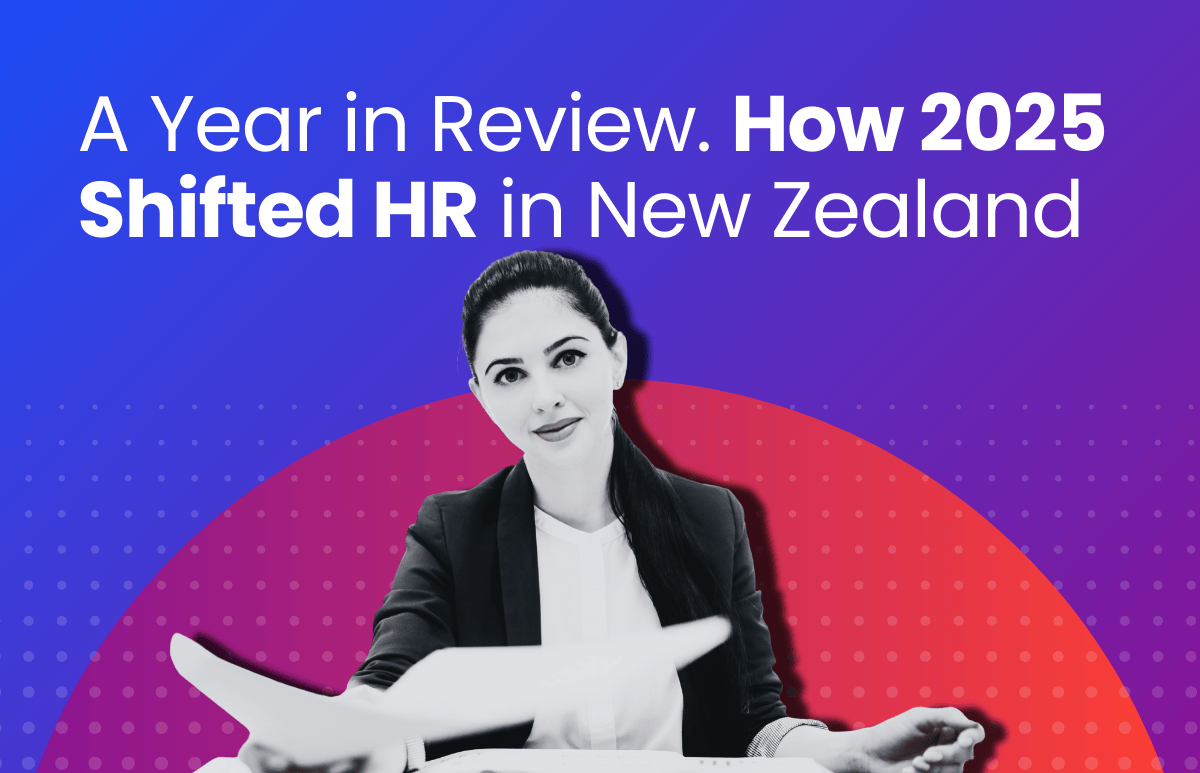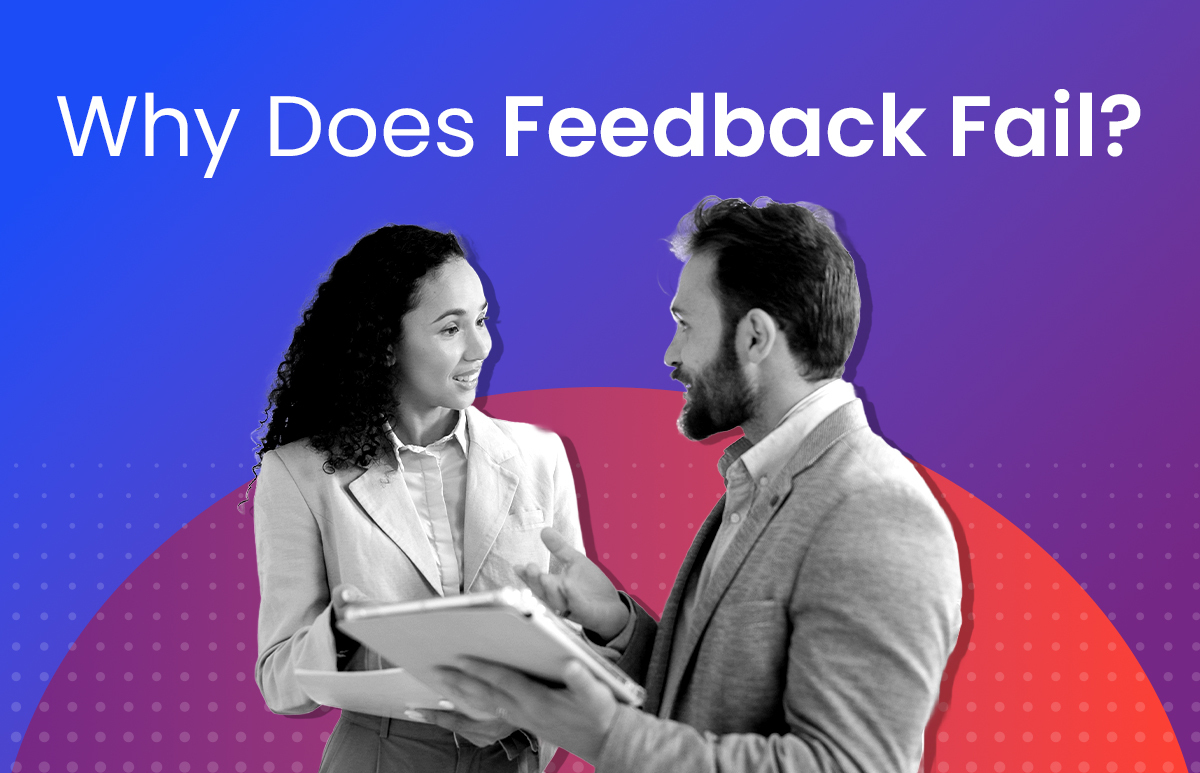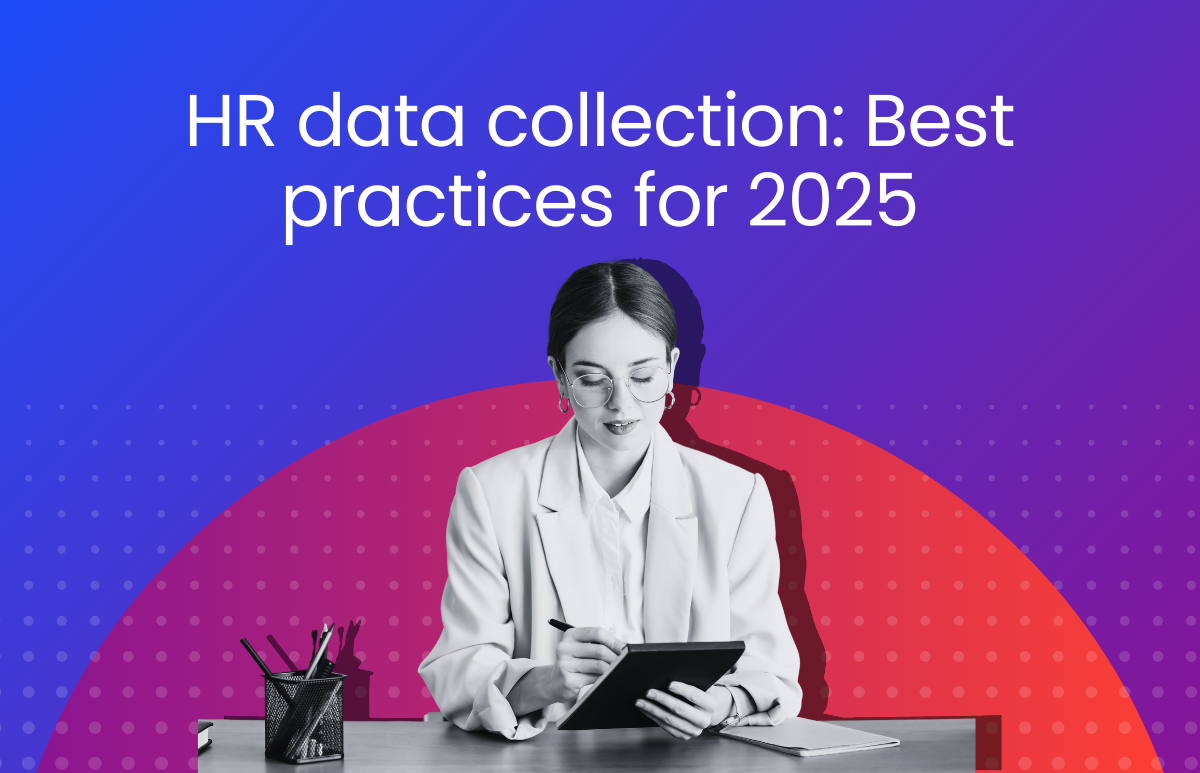HR Analytics: Guide to Data-Driven HR
Data-driven HR is the future of work. Uncover the power of HR analytics to transform your people strategy and make informed choices that drive your business forward.
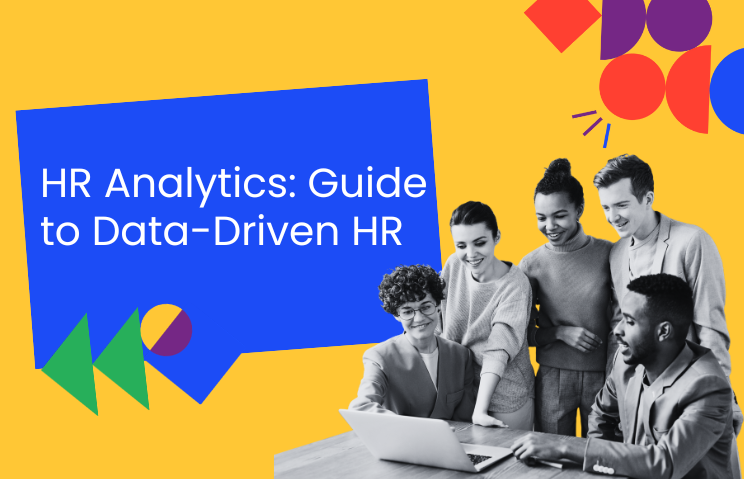
What is HR analytics?
HR analytics is the practice of collecting and analysing human resources (HR) data to gain insights into workforce trends and make informed decisions about HR strategies. It involves using various metrics, such as employee engagement, turnover rates, and performance data, to identify patterns and correlations that can inform HR initiatives. This data-driven approach helps organisations optimise their workforce, improve employee satisfaction, and achieve their overall business goals.
Why HR analytics matter to your business
HR analytics are essential for aligning HR strategies with business goals. By using employee data, companies can improve recruitment, predict and address workplace issues, and make data-driven decisions. HR metrics reveal patterns to enhance team dynamics, employee engagement, and overall organisational success. By leveraging data, businesses can proactively shape their future.
Workforce planning
Advancements in HR analytics have revolutionised how organisations approach workforce planning and strategy. By leveraging comprehensive data analysis, companies can address critical challenges and directly influence the success of their business operations.
Identifying skill sets gaps and forecasting future needs
Data-driven HR practices enable the identification of skill gaps within the current workforce. This precise identification allows for targeted training programs and informed hiring processes that are aligned with future industry trends and organisational objectives.
Balancing headcount and talent availability with business demands
Organisations use HR analytics to align their workforce with fluctuating business demands. Analysing workforce data ensures that staffing levels meet operational requirements while optimising labour costs. This analysis guarantees seamless adjustments to workforce size and composition in response to business cycles.
Applying predictive analytics to shape workforce strategy
Predictive analytics in HR facilitates proactive decisions by forecasting critical workforce trends and issues before they impact the business. Through data models and simulations, HR leaders develop strategies that support the organisation’s long-term goals and maintain competitive advantage.
Employee performance
Teams thrive when their individual members perform optimally, aligning their goals with the company’s strategic objectives. Performance analysis stands as a gateway to this alignment, offering a granular look at where talents bloom and productivity may be improved. With the right tools and methods, organisations can not only measure but also amplify employee capabilities.
Tools and methods for effective employee performance analysis
Diverse performance analysis tools exist, ranging from simple observational techniques to advanced software platforms. Organisations might deploy 360-degree feedback systems to gather comprehensive reviews from peers, subordinates, and supervisors. Performance management software can track individual achievements against predefined objectives, while time-tracking tools offer insights into workflow efficiency.
- 360-degree feedback collects diverse insights on employee performance.
- Performance management software pinpoints alignment and deviations from goals.
- Time-tracking tools provide an empirical basis for efficiency assessments.
Using insight to drive employee development and growth
Gleaning insights from data doesn’t simply end with observation; these findings drive targeted development programs. By understanding the strengths and opportunities of each team member, personalised training and career pathways emerge. Mentorship programs, tailored learning strategies, and opportunities for skill acquisition are just a few outcomes of a data-informed approach to staff development. Such strategic investment in personnel not only boosts productivity but also cultivates loyalty and workplace satisfaction.
Promotions and lateral moves become better informed, harnessing analytics to place individuals where they can best contribute and grow. Through this lens, performance analysis is more than an evaluative practice; it represents a cornerstone of strategic human resource management.
Talent acquisition and retention
Talent acquisition and retention stand as critical functions within the landscape of Human Resources. Attracting the right talent and retaining such individuals can significantly impact organisational continuity and competitiveness, so assessing and improving on this process can make for great gains.
Leveraging recruitment data to enhance talent acquisition strategies
Recruitment data assists organisations in understanding the efficacy of sourcing channels and hiring practices. Through ongoing analysis, HR professionals glean insights on which recruitment strategies yield the highest quality candidates. This prompts adjustments in hiring campaigns, targeting efforts where the highest return on investment is realised. Additionally, candidate experience data helps refine the recruitment process, thereby attracting top talent in the industry.
Retention analytics: Predicting and preventing turnover
Retention analytics serve as a proactive tool for identifying patterns and risk factors associated with employee turnover. Focused analysis of factors such as job satisfaction, career progression opportunities, and organisational culture offers predictive insights. These insights, in turn, enable HR teams to implement targeted plans that foster a stable workforce and minimise the costs associated with high employee churn.
- Retention analytics pinpoint risk hotspots across departments or roles, prompting timely HR support.
- Tracking employee milestones and recognition can highlight underutilised retention tools.
- Data-driven retention strategies customise approaches to individual needs, enhancing employee loyalty.
Talent acquisition powered by analytics refines recruitment processes while retention analytics foster a proactive approach to keeping valuable workforce assets. As organisations harness these capabilities, they position themselves more robustly against the challenges of tough labour markets.
Learning and development (L&D)
When businesses harness the potential of Learning and Development (L&D), they observe marked improvements in innovation, service quality, and of course, financial performance. Through HR analytics, firms can not only measure the effectiveness of L&D activities but can also tailor employee training programs that are precisely aligned with both organisational goals and the personal aspirations of employees. By mapping training outcomes directly to skillset enhancements, decision-makers gain unique insights into the competencies driving their company forward.
Measuring L&D effectiveness using HR analytics
HR analytics serves as a yardstick for the value brought to an organisation by its L&D programs. By tracking key metrics such as course completion rates, knowledge retention, and the application of skills acquired, companies gain a clear picture of their return on investment (ROI) in employee development. Capturing data pre- and post-training allows for a comparative analysis demonstrating the direct benefits resulting from L&D initiatives.
Linking employee training outcomes to skill sets enhancement
Data gathered from HR analytics reveal the bridge between employee training and the increased proficiency within their skill sets. Further, these enhanced skills can be matched with the specific needs of the business, pinpointing where L&D can be targeted to fill gaps or to capitalise on emerging opportunities. Through HR analytics, organisations identify the precise training programs that correlate with improved performance and productivity.
- Using performance data to target areas for improvement ensures training is both relevant and beneficial.
- Career tracking analytics can highlight the path of high performers, guiding the development of future training programs.
- Analysing feedback from employees helps refine L&D content, making it more engaging and applicable to their real-world challenges.
Through the strategic application of HR analytics in L&D, businesses foster a culture of continuous learning. As employees evolve their capabilities, the business responds with agility to market demands, securing their competitive edge.
Employee engagement surveys and metrics
Delving into employee engagement surveys and metrics offers a direct line to the workforce’s perceptions, feedback, attitudes, and commitment. These tools are instrumental in understanding the extent of employees’ connection to their roles and the organisation. By crafting surveys with care, a business gathers data that is then translated into actionable insights.
Crafting surveys to accurately gauge engagement
Designing effective employee engagement surveys necessitates a blend of open-ended questions and scaled responses. This combination captures nuanced feedback and quantifiable data. Questions must reflect the relevance to the organisational culture and goals, ensuring that feedback is aligned with the areas of strategic concern. The inclusion of demographic questions can also draw correlations between engagement levels and various employee segments.
Interpreting metrics to improve employee satisfaction and productivity
Upon collection, data from engagement surveys undergoes analysis to extract meaningful patterns and trends. These metrics serve as benchmarks for organisational health. Common metrics include employee net promoter score (eNPS), which measures likelihood of employees recommending the company as a place to work, and turnover intention rates, indicating possible future exits.
- Responses to surveys can pinpoint departments or teams with lower engagement levels.
- Survey outcomes can reveal critical drivers of engagement unique to the organisation.
- Analysis may uncover underlying issues affecting morale that, when addressed, improve overall productivity.
Equipped with these insights, leadership is better positioned to formulate strategic actions. For instance, by increasing recognition of employees’ contributions or by addressing bottlenecks in communication channels, a palpable rise in engagement often follows. Moreover, consistently monitoring these metrics over time can help track the effectiveness of implemented strategies and foster a culture of continuous improvement.
Succession planning
Leadership transitions can define an organisation’s trajectory. Data-driven approaches to succession planning empower businesses to align their strategic vision with the cultivation of future leaders. The identification of high-potential employees, aided by analytics, supports companies in creating robust leadership development frameworks.
Leadership development analytics offer insights into the competencies, experiences, and performance indicators that predict successful leadership. By leveraging this data, organisations tailor development programs with precision, invest in the right candidates and ensure continuity in leadership roles.
Data-driven approaches to uncovering potential leaders
Utilising analytics transforms the succession planning process from a subjective endeavour into an objective, measurable series of actions. Variables like cross-functional project participation, mentorship roles, and upward feedback ratings give a transparent image of a candidate’s potential and readiness for advancement.
Proactive talent reviews, powered by comprehensive data, surface candidates who may have been overlooked. These analytics-driven assessments distinguish individuals with the attributes required to navigate complex and high-pressure situations that leaders often face.
Planning the future of leadership within your organisation
Executing a forward-looking leadership plan necessitates understanding the critical components of successful leaders within your organisation. Leadership analytics scrutinise career paths, experience levels, and the impact of training initiatives, plotting a course for succ ession that aligns with current and future organisational needs.
- Identify competencies tied to successful leadership within the organisational context.
- Assess the developmental gaps of potential leaders to focus training resources efficiently.
- Track the progress of leadership candidates, using quantitative benchmarks and qualitative feedback.
Armed with concrete data, firms can predict leadership vacancies and prepare individuals to assume these roles without disrupting business continuity. Metrics gleaned from leadership development analytics become indispensable tools, giving clarity to the decision-making process and securing the legacy of the organisation’s leadership.
Compensation and benefits
Compensation and benefits stand as a determinant factor influencing workforce stability. Analysing these variables through HR Analytics provides insights that aid companies in crafting competitive packages that both attract and retain talent. The relationship between effectively structured reward systems and employee morale reveals a direct impact on organisational allegiance and productivity.
Utilising compensation and benefits analytics to remain competitive
Organisations deploy compensation and benefits analytics to benchmark their offerings against industry standards. Analysis of compensation data aids employers in understanding prevailing trends, ensuring they offer remuneration that aligns with or exceeds market expectations. Firms that recognise the value of competitive compensation attract high-caliber candidates, leading to a more stable and capable workforce.
Assessing the efficacy of reward strategies on employee morale
- Data on compensation and benefits highlights the connection between reward packages and employee satisfaction.
- Periodic review of employee benefits relative to job satisfaction rates offers a clear indication of how personal growth, job fulfilment, and financial incentives contribute to morale.
- Linking staff turnover rates to compensation allows organisations to adjust their strategies, thus reinforcing staff loyalty and reducing costly turnover.
Through strategic adjustments to compensation and benefits, influenced by thorough data analysis, an organisation achieves greater employee engagement and long-term workforce stability. Reward strategies thus become tailored, dynamic and integral to fostering a supportive work environment.
Diversity and inclusion
In the landscape of modern human resources, leveraging data to support a diverse and inclusive work environment stands out as a concrete strategy. By accurately measuring diversity within an organisation, companies develop insights that lead to more reflective cultural representation. Spotting and addressing imbalances becomes a continuous process, fueled by the richness of HR analytics.
Measuring diversity and fostering inclusive workplace culture
Data collection and analysis pinpoint areas within an organisation’s structure where diversity is lacking. A thorough demographic analysis, for instance, not only counts how people self-identify across various groups but is also essential for understanding the breadth of employee experiences and fostering an inclusive culture. Regular audits of this nature inform leadership about the effectiveness of current policies and pinpoint where new strategies may be introduced.
Tracking progress and setting measurable goals for diversity initiatives
Quantitative goals empower organisations to track the progress of their diversity initiatives. Adopting a systematic approach allows for the assessment of milestones over time. For example, increasing the percentage of underrepresented groups in managerial roles might serve as a quantifiable target. Through HR analytics, these targets transform into actionable objectives met with tailored programs and directives.
Analytics inform not solely by illuminating the current state of the workforce but by exposing trends over time. Organisations relying on such comprehensive data are better equipped to understand the trajectory of their diversity efforts, leading to conscious and strategic decision-making that propels them toward an inclusive future.
HR analytics tools and technologies
The market offers a wide range of HR analytics tools and technologies. Each software has its own special features, but everyone wants accuracy, integration, scalability, ease of use, and strong reporting.
Popular HR analytics tools include:
- ELMO Software Analytics: Comprehensive HR analytics solution designed to help businesses unlock valuable insights from their workforce data. This product empowers HR professionals to make informed, data-driven decisions that improve overall performance and drive strategic growth.
- Visier: Provides an end-to-end workforce intelligence solution, known for its predictive analytics and easy-to-understand dashboards.
- Tableau: Geared more towards data dashboards and more complex organisational needs, but can be used for collating and displaying analytics of all kinds.
Choosing the right HR analytics tool involves considering:
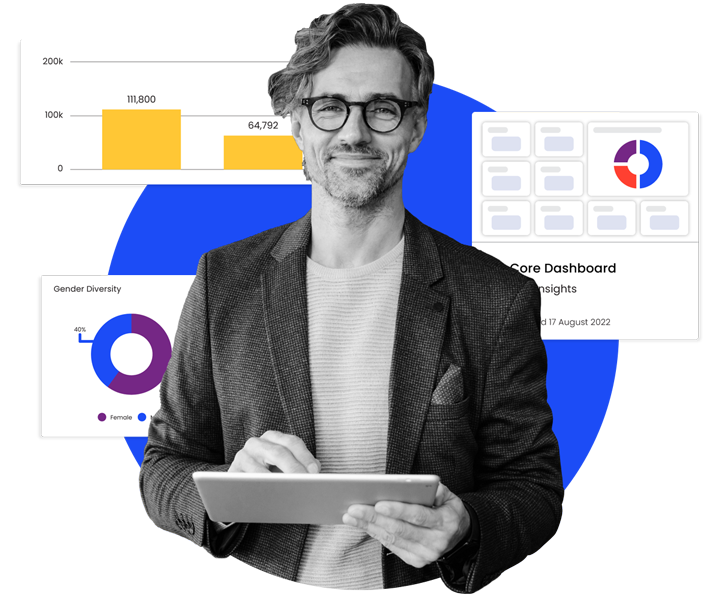
- Alignment with company goals and tech landscape: Does the tool support your business specific needs and existing technology?
- Scalability: Will the tool grow with your business?
- Integration capabilities: Can it easily integrate with other systems used in your company?
- Ease of use: Can HR professionals use the tool effectively without extensive technical knowledge?
- Vendor support: Does the vendor provide strong training and support resources to help with implementation?
To pick the right HR analytics tool for your business, assess these factors. This tool will help you make informed decisions about your workforce.
 HR Core
HR Core 


